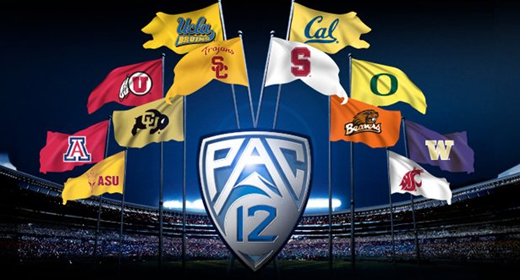The Hotline mailbag is published every Friday. Send questions to pac12hotline@bayareanewsgroup.com and include ‘mailbag’ in the subject line — or hit me on Twitter: @WilnerHotline.
*** Please note: Several topics related to Pac-12 media rights and expansion will be answered separately, in forthcoming articles.
(Some questions have been edited for clarity and brevity.)
What do you make of former ESPN chairman John Skipper’s comments that the ACC and Pac-12 should merge and that would force a renegotiation of the ACC’s deal with ESPN? — @pfnnewmedia
Anytime Skipper addresses college sports realignment or media matters, we listen. And the concept of a bicoastal merger has been discussed (on the Hotline and elsewhere) since the immediate aftermath of USC and UCLA announcing their departures to the Big Ten.
However, we see a few hurdles.
The ACC’s media deal with ESPN runs into 2036 and coincides with the grant-of-rights agreement that binds each school’s media revenue to the conference. That, not the media contract itself, is holding the ACC together. So far, it has proven unbreakable.
As we see it, there are two outcomes to a merger:
— The grant-of-rights remains in place as incoming Pac-12 schools commit to the partnership until 2036.
— The grant-of-rights is broken in order to force a shorter contract cycle and a renegotiation of the ACC’s current deal.
Both are problematic.
We cannot see Oregon or Washington (or Utah, for that matter) agreeing to a grant-of-rights deal into the mid-2030s. And if the agreement is broken, the ACC might collapse. Clemson and Florida State are unhappy with the revenue situation and would assuredly seek membership in the SEC.
Meanwhile, North Carolina would be a candidate for both the Big Ten and SEC.
The SEC isn’t actively looking to add schools, but the dissolution of the ACC’s grant-of-rights might change the landscape.
Could it happen? A majority of the ACC’s 14 full-time members would need to approve — it might require a supermajority vote — because ESPN probably wouldn’t break the deal willingly.
The terms are favorable for the network. If it can pay a reasonable amount for the Pac-12 and keep the ACC intact, why agree to a merged entity that could be more costly?
Is there a way to construct a merger that benefits ESPN in both value and duration? Perhaps. The scenario feels too complicated at the moment, but Skipper is, well, Skipper.
That said, the Hotline would not discount the potential for a merger down the road. In fact, much of the Pac-12’s current calculation with its media rights negotiations is designed to set the conference up for the next stage in the evolution of college football.
That phase could begin in the late 2020s or early 2030s, at the start of the next media contract cycle for the Big Ten, Big 12 and Pac-12.
In that world, the Big Ten doesn’t create a western arm (with Oregon, Washington, Cal and Stanford), and the Pac-12 members are willing to sign a grant-of-rights deal into the mid-to-late 2030s.
If the Big Ten doesn’t expand, the chances of the SEC growing again are diminished, adding stability on the ACC’s side.
The Hotline has long thought the most likely future shape of college football featured the SEC and Big Ten with 20-to-24 members — after they pluck the premium remaining brands on the two coasts — and a third league of 24-to-26 teams that forms around the Big 12.
Key point: Only five football programs not committed to the SEC and Big Ten carry substantially above-average valuations: Notre Dame, Oregon, Washington, Clemson and Florida State.
(Could that change by the end of the decade? Sure. Utah is the type of program that could raise its brand to the level necessary for an eventual move into the Big Ten or SEC.
(That’s one reason the Utes are better off in the Pac-12: The best way to enhance long-term value is through playoff appearances, which are far easier for Kyle Whittingham and Co. in a 10-or-12 team Pac-12 that doesn’t include USC than in a 16-team Big 12.)
However, we wouldn’t dismiss the possibility of an alternative path featuring a merger of the coastal conferences and the Big 12, Big Ten and SEC remaining as they are.
In other words, the Power Five isn’t destined to become the Power Three. It could morph into the Power Four.
Why is the Pac-12 being so tight lipped about everything and allowing the Big 12 to control the media narrative? — @Brandt_Anderson
This is a fascinating subplot to the saga.
Presumably at commissioner George Kliavkoff’s direction, the Pac-12 has kept the details of its negotiations quiet and refused to respond to media reports suggesting the conference is on the brink of collapse.
The avoidance of leaks has been impressive, especially given the duration of the process. And at this point, the discussions are entirely at the presidential level — the athletic directors are not involved.
Kliavkoff’s approach serves his bosses (the presidents) and his negotiating partners at ESPN, Amazon, Apple, etc.
However, the void has been filled with rumor and speculation, much of it coming from the Big 12 footprint and all of it designed to 1) undermine Pac-12 stability, and 2) devalue Pac-12 media rights.
Even Big 12 coaches and athletic directors are speaking publicly about poaching the conference — an astounding turn of events compared to the manner college sports has operated in the past.
(It’s not a good look for the industry, not a good look at all.)
All the noise from the Big 12 creates palpable tension within the Pac-12, at least on the front lines. I’m not sure whether the impact is nearly as great at the board level.
But remember, too, that Pac-12 created the window for a negative narrative to emerge by taking this process across two calendar years.
Clearly, the TV deals on the table stink since nothing has been signed yet. Do the Four Corners schools keep waiting around for an 11th-hour miracle and not leave until the deal is finalized? — @REcclesness
I cannot imagine any president would agree to join the Big 12 without knowing the final proposal from Pac-12 media partners; it would be fiscally irresponsible of them.
Even if they wanted to bolt early — and I have no reason to believe that’s true — their governing boards (regents and trustees) would insist on knowing the options.
There is plenty of noise in the media ecosystem, but our view has not changed: We believe all 10 presidents would prefer to remain in the Pac-12.
Also, we should note the important distinction between a disappointing contract and a deal so unacceptable that it forces schools to leave.
That said: Approval of a media contract requires only eight of the 10 votes.
Will we have news on the media deal/expansion before the presidents meet in two weeks? — @lilcmac5
It’s entirely possible.
The board of directors met Tuesday and is scheduled to convene (remotely) again the week after next. However, the process is unfolding daily on a less formal basis, with commissioner George Kliavkoff discussing options with the executive committee and individual presidents. (And the presidents are talking with each other.)
We are all but certain that every president will know the specifics of the media deal and the expansion options before the next board meeting. There will be no surprises. If everyone is ready to move forward, they assuredly would vote before the next meeting. Kliavkoff has zero reason to wait.
Also, expect any approvals to be unanimous or portrayed as unanimous. The conference won’t want any hint of discontent.
As a source once told the Hotline: “In higher education, a 9-to-1 vote is a tie.”
Do you see the potential for Friday Night games on Amazon to hurt recruiting, especially when trying to recruit nationally? — @TheSaferMan
We believe there is only one requirement for the Pac-12 media deal: The conference must have its best football games on ESPN (or ABC) — partly to provide exposure for the games themselves, partly because a contractual agreement with ESPN would result in the studio shows discussing the conference.
Otherwise, I do not believe any single aspect of the visibility component is make-or-break, whether it’s the number of games on streaming services or the days of competition.
Even a weekly Friday game on Amazon would carry little recruiting damage. Prime Video is available anywhere, just like ESPN+ (both require a monthly fee).
Bottom line: Recruits will care, first and foremost, about NIL money.
If the teams in the Pac-12 have their name, image and likeness games in place, and a presence on ESPN, recruiting will be fine.
Am I wrong for wanting an Apple TV deal? Is it also wrong for a gambling network? — @StandardWeho
Neither endgame is wrong, in our opinion.
The growth of legalized sports wagering and the advances in mobile betting technology are such that every conference will eventually sell statistical data (directly or indirectly) to gaming companies.
The Pac-12 could very well be the first, but it won’t be the last.
Our view of a streaming deal with Apple fits within the parameters mentioned above: So long as the Pac-12 partners with ESPN for a package of premium games, there is little downside to a streaming component.
Is anything easier than grabbing your iPhone, opening an app and watching games?
Is Pac-12 survival now a 5-point favorite over extinction, or a 4.5-point favorite? — @patriotairman
Every week that goes by without a deal, the Hotline will reduce the survival odds by a half-point. Time and instability move in lockstep at this point in the process.
As of Monday morning, survival will be favored by 4.5 points over extinction.
Boise State alum and fan here. Of all the possible scenarios for both the Pac-12 and Big 12, which ones will most likely result in the long-deserved golden ticket for the Broncos? — @DamonDennett
We are hesitant to cite any absolutes when it comes to realignment, but I would be extremely surprised if the Pac-12 adds Boise State.
The Broncos don’t carry enough media value to qualify as a revenue-add for the existing Pac-12 schools: The Boise media market is No. 101, according to Nielsen DMAs, far smaller than Spokane, for instance.
Also, the university doesn’t come close to clearing the Pac-12 threshold academically.
What will the Mountain West Conference do? — @doitfresh
The Mountain West is at the mercy of the Pac-12 and Big 12 in the same manner the Pac-12 and Big 12 were at the mercy of the Big Ten and SEC. Each rung of the college football food chain dictates the future of the level below.
[related_articles location=”left” show_article_date=”false” article_type=”automatic-primary-tag”]
San Diego State is a candidate for both conferences, with the Pac-12 as its preferred destination, while Fresno State is a potential add for the Big 12. (Others might be, as well.)
The MW is waiting on those decisions, presumably plotting its countermoves under new commissioner Gloria Nevarez.
If SDSU and Fresno State were to leave, the conference could move forward with 10. But we wonder if any of the FCS schools in the western third of the country would be interested in moving up.
That would require a significant increase in resources, however, and is a more intricate decision than switching leagues within the FBS.
How tired are you of all this media deal realignment stuff? — @vakaviti
It’s a massive story that impacts fans across multiple time zones, and it features so many interesting pieces — from media valuations and media consumption trends to scheduling and expansion calculations. (To name just four.)
But I never expected it to last this long, and I hope it ends soon.
*** Send suggestions, comments and tips (confidentiality guaranteed) to pac12hotline@bayareanewsgroup.com or call 408-920-5716
*** Follow me on Twitter: @WilnerHotline
*** Pac-12 Hotline is not endorsed or sponsored by the Pac-12 Conference, and the views expressed herein do not necessarily reflect the views of the Conference.
Related posts:
 Wilner Hotline – CFP expansion delay: Rose Bowl off New Year’s Day? Details…
Wilner Hotline – CFP expansion delay: Rose Bowl off New Year’s Day? Details…
 Pac-12 Power Rankings – Wildcats on Pace For One of the Greatest Seasons in Pac-12 History
Pac-12 Power Rankings – Wildcats on Pace For One of the Greatest Seasons in Pac-12 History

(AP Photo/Steve Marcus)
CFP and bowl selections: Winners and losers from college football’s biggest day
Arizona head coach Adia Barnes (AP Photo/Tony Avelar)
Metcalfe Pac-12 WBB notebook: Stanford sweeps ranked LA schools, Utah splits despite Pili injury, Arizona back in bye position
